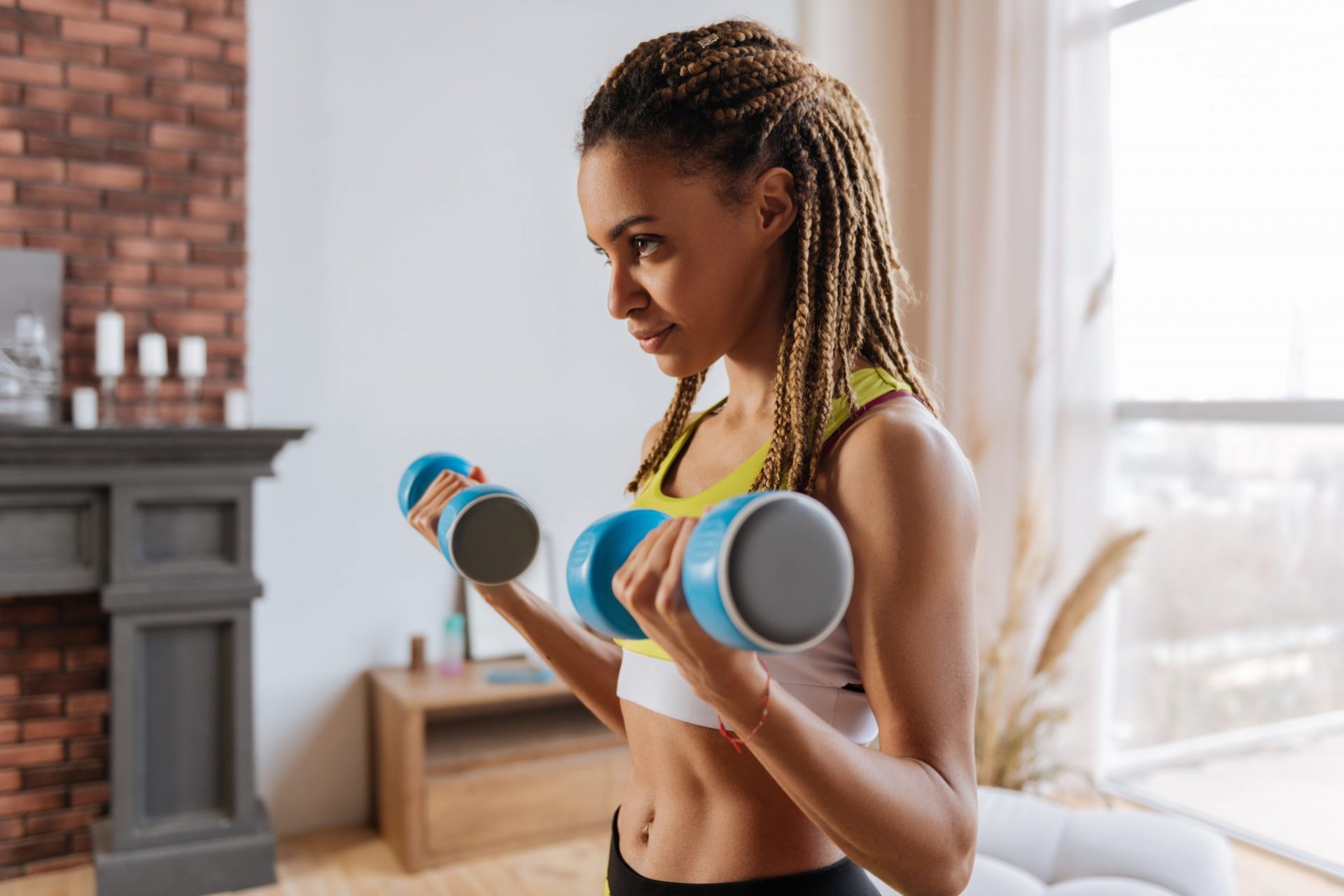Missing out on training with heavy weights at the gym? Don’t fret. Using lighter dumbbells at home can actually have big benefits.
For most of us, home workouts will involve a lot less, and a lot lighter, equipment than we might be used to. For gym-goers, barbells and squat racks have been replaced with dumbbells and kettlebells, and even those who usually get their exercise in with classes, spin bikes, yoga blocks and reformer pilates stations are nowhere to be seen.
“I miss the gym, but exercise isn’t always about go big or go home,” explains personal trainer Gemma Mushington. “Not going heavy doesn’t mean it’s not worth it. In fact, there are loads of things we can be doing with and loads of benefits to using lighter weights at home.”
You may also like
“I’m not ready to go back to home workouts, but this is how I’ll motivate myself”
Most crucially, we can use our home workouts and lighter weights to work on skills that will help us get stronger when we are back in the gym. “If you wanted to increase the weight you deadlift you might usually have just focused on the deadlifts themselves and practising accessory movements. But if you weren’t focusing on other things, like hip tightness, or opening up your ankles, or working out where stiffness is coming from, your body won’t be getting stronger optimally,” explains Gemma.
Whatever the reason you neglected these smaller parts of training (be it you lacked time, you didn’t realise their importance or you didn’t find them as fun as throwing around big weights or going hell for leather during treadmill sprints), now is the time do them.
“If that deadlift was the goal, I could be using resistance bands to do side-lying clams to work on hip mobility and open up my abductors,” says Gemma. “All of those things will make me better set when we get back to the gym.”

Using lighter weights can also improve our body’s resistance to fatigue. Doing 12+ reps of an exercise is known as muscular endurance training, whereas one to five reps is about strength and six to twelve is about building muscle. While the latter two might be your goals, doing higher rep ranges “allows your body to work on not getting so tired. You’ll be getting better at withstanding the move for a longer amount of time,” says Gemma.
And using less resistance usually means we spend more time under tension, which is a huge challenge to the body. “Even someone who can squat 50KG with a barbell will suffer when you ask them to hold a bodyweight wall sit for a minute,” Gemma reminds us.
While the science on the best possible muscle building techniques point towards the lower rep ranges mentioned earlier, studies, such as a 2016 paper from Journal of Applied Physiology, show that it is also about overall muscle exhaustion during the workout, rather than just rep ranges. That means “it doesn’t matter whether the weights are heavy or light… For the ‘mere mortal’ who wants to get stronger, we’ve shown that you can take a break from lifting heavy weights and not compromise any gains,” the study author, Stuart Phillips, says.
You may also like
Weight training for women: the best kettlebell workouts to build strength
While we shouldn’t really be expecting our bodies to be smashing personal bests right now, it might come as a comfort to you that there are big benefits to lighter weight training. Gemma agrees: “It is still possible for you to get stronger, but right now should more be about realigning what your idea of gaining strength is,” she says.
So, let’s all agree to do the best we can with what we’ve got and support our bodies to function well for when we return to our usual workout schedule, shall we?
Follow @StrongWomenUK on Instagram for the latest workouts, delicious recipes and motivation from your favourite fitness experts.
Images: Getty
Source: Read Full Article
